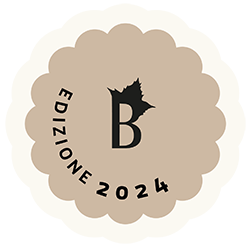The history of Ollolai is very ancient and rich of legends that have become heritage to its inhabitants. The first signs of life were discovered on Mount St. Basil and date back to prehistoric times, particularly in the Middle Neolithic.
According to the stories the town would have been the residence of Ospitone, King of Barbaricini. So they were called by the Codex Justinianus (534 AD) the population of Central Sardinia during the Byzantine period. Their religion included many deities associated with the forces of nature.
In 594 A.D. Pope Gregory the Great sent a letter to Ospitone calling him head of the barbaricini (Gregorius Hospitoni duci Barbaricinorum) in which it sought his help to encourage the conversion of his people and to welcome two of his clergy, Felice and Ciriaco. The Pope’s intervention brought peace between the barbaricini and General Zabarda sent by the Byzantine Emperor Maurice Tiberius Flavius.
In the medieval period it is among the countries that fought for the Giudicato of Arborea against the Aragonese. After the peace in 1388 between John and e Giovanni D’Aragona, Ollolai remained linked to the Sardinian dynasty, entering the feuds of the Marquis of Oristano Leonardo Alagon. It was the same Marquis to grant a convent to the Franciscan friars.
The history of the town is linked once again to a legend, which tells about the disamistade (feud) between the two major lineages Ladu and Arbau. The struggles between the two families led to the persecution of the Franciscans. The friars went away in 1490 throwing a curse, which according to the elders stories, caused the massive fire that destroyed most of the town. The official story sees the town back to the center of the administrative life with Ladron: in the seventeenth century Ollolai became the capital of the district in which resided officials of the great feud.
The injustices and the feudal fiscalism continued from the lords to the Spanish rulers of Mandias and Savoy.
The largest and most populous center that gave its name to the Barbagia Judicial District of Ollolai was abandoned following the plague that decimated the whole island but especially for the emigration of many families to other towns.
On Mount St. Basil, San Basilio, surrounded by Mediterranean vegetation, lies the country of Ollolai, about 1000 m above sea level.
Oak, Yew, Wild Pear, Ilex, Erica Scoparia, and Holly cover the mountain on which was built the Byzantine church of Saint Basil the Great, where you can still see the remains of the Franciscan friary which was the scene of the legendary curse of the friars.
To the south-west of the town, by the granite massif on the border of Gennargentu, are the highest peaks of the municipal area called the “Window of Sardinia” Punta Manna (1104 m) and Punta de S’Aschisorju (1127 m). From here, on a clear day with clear skies, you can observe the seas around the island to the east and the west, a show that attracts many hikers along the trails that meander through the rocks and dense vegetation.
At the beginning of the road that leads to the top there is Sa Conca Frabica, the rock shelter used as a burial from the Middle Neolithic to the Iron Age. Towards the south -east you can walk the beautiful trails that lead to the Cucchinadorza lake where you will encounter archaeological Nuragic remains. Pure air and the richness of the sources have helped to preserve the pristine Oak and Holm Oak trees: natural monuments that bear witness to a nature still intact. In this ecological niche live several species of Birds of prey, Wild boars, Foxes, and Martens.
The abundant presence of asphodel is of particular value for local handicrafts: the plant is the raw material for the manufacturing of the famous baskets made of different types and sizes by the expert hands of women ollolaesi.
In the archaeological park on Mount St. Basil it is possible to take a dip between prehistoric rock shelters and tombs carved in tafoni.
The rock shelter of Sa Conca Frabica retains seven layers of archaeological excavation that testify to the continuous use since the Middle Neolithic to the Iron Age. The place was used to lay the dead, next to which was placed a funeral set, consisting mainly of pottery objects but also bronze and obsidian.
Nearby is the ancient church of St. Basil believed to have been built by Basilian monks in the Byzantine era. After the remodeling of ’900, traces of the original building are in the trachyte reused later for the construction of a typical accommodation for pilgrims around the country churches of Sardinia.
Exploring the area around the church you can see the remains of an ancient Nuragic village.
There are traces of ancient civilization of Sardinia in the Nuraghi of Loai, Talaighe, Legunnoro and Palai.
Of course there is a walk along the streets of downtown; here are lined the typical two-storey houses built of stone blocks, often in granite.
In the main square there is the parish church dedicated to St. Michael. Inside there are traces of the original building built in Gothic –Aragonese style, there are also viewable tables of the painter Carmelo Floris. The artist spent his youth in Ollolai devoting many of his works to scenes of everyday life and feasts; his portraits are famously filled with women of Ollolai wearing their beautiful traditional costumes.
Among other typical products stand out the Asphodel baskets: the ability of the maestre cestinaie (Master basket makers) of Ollolai is renowned throughout the island. The Historical Exhibition of S’Incrariounzu has been established to witness this important production, it is a museum dedicated to the interlocks and all the stages of the processing of asphodel in Piazza Marconi.
In the numerous festivals that mark the passage of time, there are matches of an ancient fight that since 1995 has entered the Federation of Celtic Wrestling: s’istrumpa. This discipline dates back to the Nuragic age as witnessed by some bronzetti (typical Sardinian statues) of the time: this is a body to body fight in which the wrestlers, called gherradores must huddle in a precise position of the arms and try to make the opponents shoulders touch the ground.



